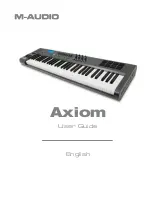
SPBS8
01 (09/10/2008)
Velleman
®
7
Practical considerations
•
When environmental temperature rises, the detection distance becomes shorter. Distance
tolerance due to temperature changes is 0.17%.
•
Detection results depend on the position of the sensors, the shape and location of objects,
reflecting angles, weather conditions, etc. ….
DO NOT rely solely on the displayed information when driving the vehicle.
Be aware of the surroundings of the vehicle before and during use of the system.
Reflection angle
Depending on the reflection angle, the reading may be
distorted.
Point
A
in this example may not be detected.
Reflection angle
Surface
a
is closer to the sensor than surface
b
, but
surface
b
has a better reflection so it will be detected first
whereas surface a may not be detected at all.
Pint
C
may not be detected when the surface is smooth
and shiny and angle
A°
is large.
Obstacle height
At first, the obstacle
Ta
which is below the senor is
detected. However, when
Tc
approaches the vehicle, its
reflection becomes stronger than that of
Ta
, so the
system only warns about
Tc
.
Surface of obstacle
Obstacles that strongly absorb ultrasonic sound waves e.g.
sponge or fabrics are difficult to detect. Due to absorption
of clothes, persons may only be detected within a range of
±1.3m behind the vehicle.
Shape
Surface
B
will be detected, but as surface
A
is located
outside the detection range, it may never be detected.
Road conditions
Rough road conditions might trigger the warning system.
The reverse speed must be below 5km/h when the parking aid system is active.
•
Keep sensors clean at all times to ensure proper functioning.
•
Verify on a regular basis that sensors are still properly mounted.
•
Defective sensors should be replaced as soon as possible. Refer to an authorized dealer for spar
parts.
•
It is strongly advised to test the system before use.








































